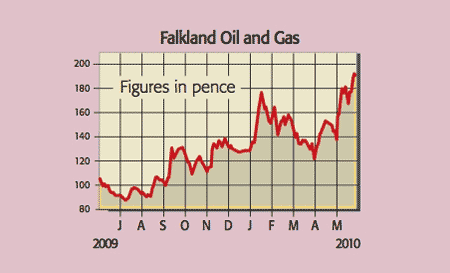
Tom Bulford tips his three favourite small-cap exploration companies currently prospecting in oil’s most promising frontiers.
If you’re looking for a diversified play on frontier regions, there are two stocks I’d favour. Heritage Oil (LSE: HOIL) has projects in Uganda, Russia, Iraq, the Congo and Mali, among others. Or you could invest in Cairn Energy (LSE: CNE), which is in frontier regions such as India, Greenland, Albania and Tunisia. But if you’re happy to take the risk involved in backing purer plays – and do be aware that it’s risky, so don’t invest money that you can’t afford to lose – here are my current top picks.
San Leon Energy (Aim: SLE). Following its recent merger with Island Oil & Gas, San Leon now has on-shore and off-shore exploration interests in the US, Ireland, the Netherlands, Albania, Sicily, Poland and Iraq. But its main hope is North Africa. Identified worldwide resources of oil shale and tar sand exceed those of conventional oil reserves by a factor of 5:1 and some of the biggest reserves are in Morocco. Work done by Shell in the 1980s indicated that Morocco has oil-shale reserves sufficient for a 50,000 barrels/day (b/d)production over 30 years. Now San Leon is aiming to extract this oil using In-Situ Vapour Extraction technology, which forces heated gas into the fractured, oil-yielding shale. Tests are being carried out this year, and the market will be watching results closely.
- Hunting for oil in the world’s six most promising frontiers
Another major opportunity is the Zag prospect, part of the Paleozoic basin that stretches across North Africa. According to Algerian state oil firm Sonatrach, Zag could hold ten to 20 trillion cubic feet of gas and 500 million to 800 million barrels of oil. But while this potential has been confirmed by discoveries in Algeria, the Moroccan acreage is as yet untested. San Leon has completed an aeromagnetic survey and is now looking to upgrade its licence to pave the way for further development.
Falkland Oil & Gas (LSE: FOGL). Faithful followers of the firm are a patient bunch, to say the least. The company was first awarded licences over the South Atlantic in 2002. Eight years later and the Ocean Guardian rig is only now poised to drill the first well on its Toroa prospect. Results are likely around the end of June.
Although Rockhopper has been the first explorer around the Falklands to strike oil, Falkland Oil & Gas has the greatest potential. Its licence area of 49,000 sq kms is more than ten times the area held by Rockhopper or Desire, and is equivalent to 220 North Sea blocks. The firm has identified 100 prospects and estimates that its top ten hold ten billion barrels. Reserves at Toroa are estimated at 1.2 billion barrels, but whatever happens here, its partner BHP is committed to hiring a rig to drill at least two wells in the deeper waters of its licence area later this year. According to Falkland Oil & Gas, even a 100 million barrel discovery at an oil price of just $25 a barrel would be a commercial proposition. At last year’s AGM it said that a 500 million barrel discovery could be worth £14 a share and a 3.5 billion barrel discovery worth £100 a share.
Tower Resources (LSE: TRP) has a 100% working interest in a 6,000 sq kms block in Uganda. While two wells have disappointed, it’s committed to two more years of exploration. Broker Edison Research reckons “even a modest discovery of 30 million barrels would point to the potential for major valuation upside from Tower’s current stockmarket value of £14m”.
Tower has two other intriguing projects: licence interests in Western Sahara and a 15% interest in three blocks off Namibia, close to Sintezneftegaz’s major gas find. Arcadia, which operates Tower’s licences, says the latter structures could contain up to ten billion barrels of recoverable reserves, which would be a world-class discovery. Indeed, off-shore Namibia has already been referred to as ‘the next Falklands’.
• You can read more from Tom by signing up to his free email, The Penny Sleuth.